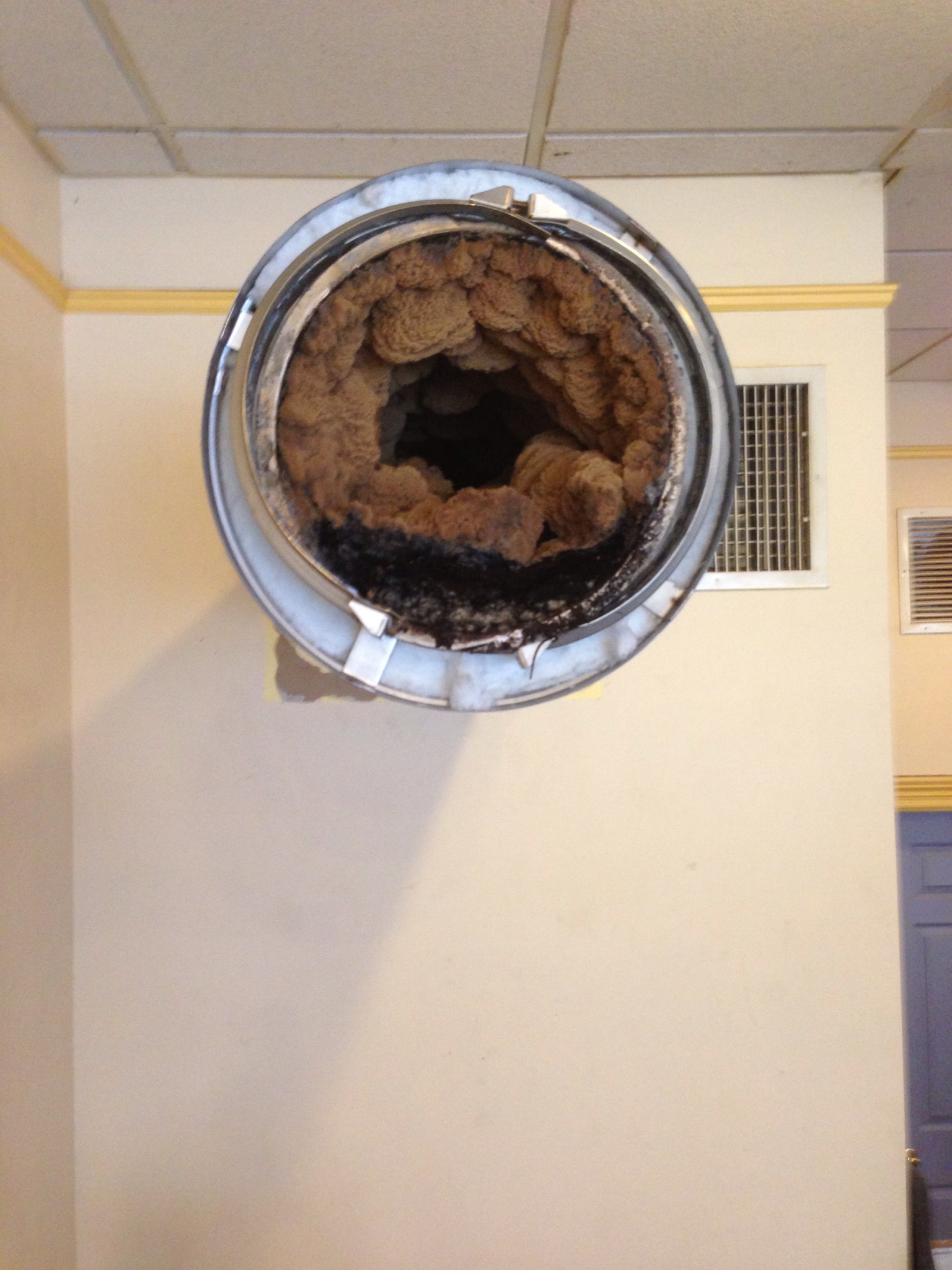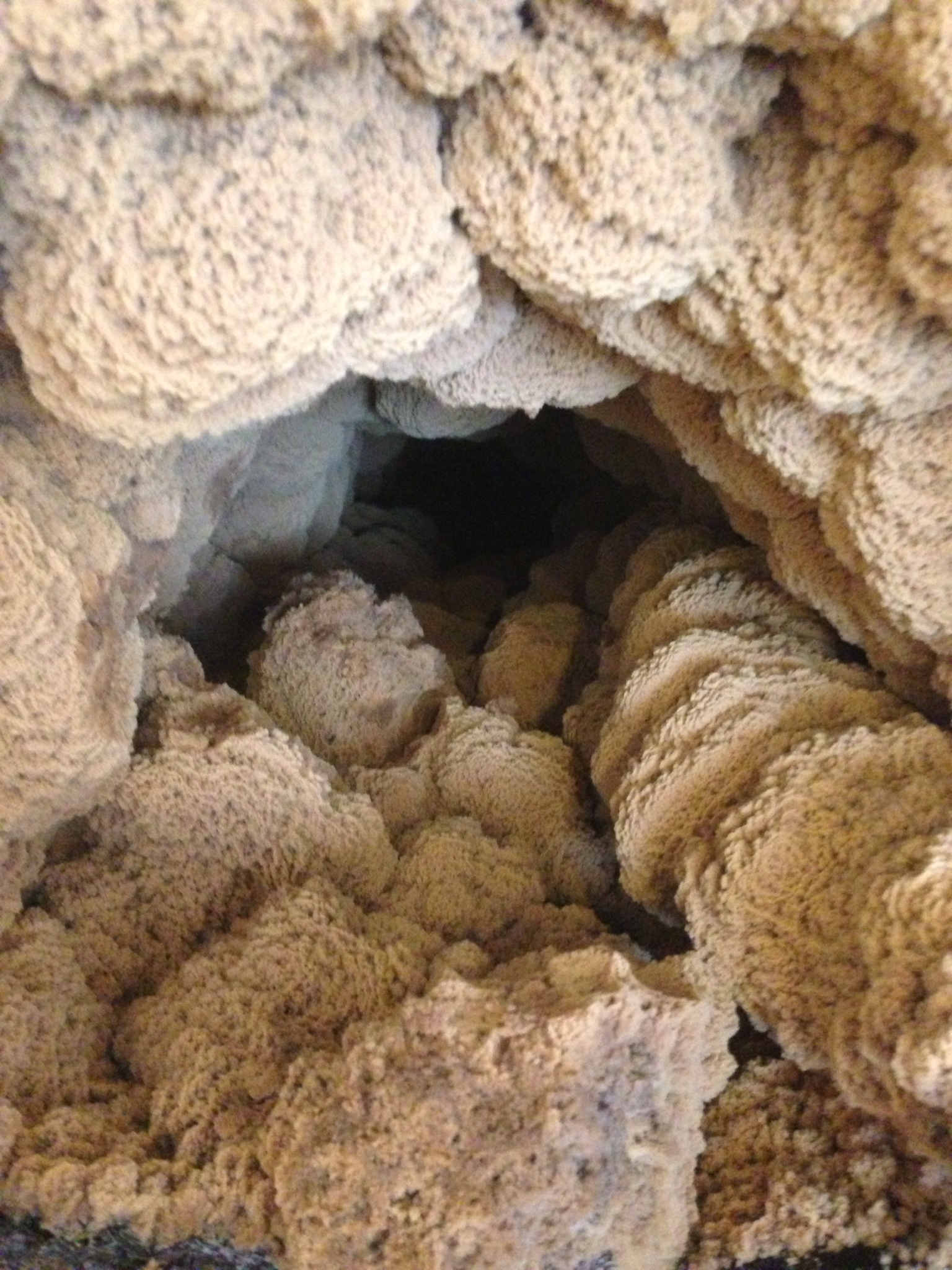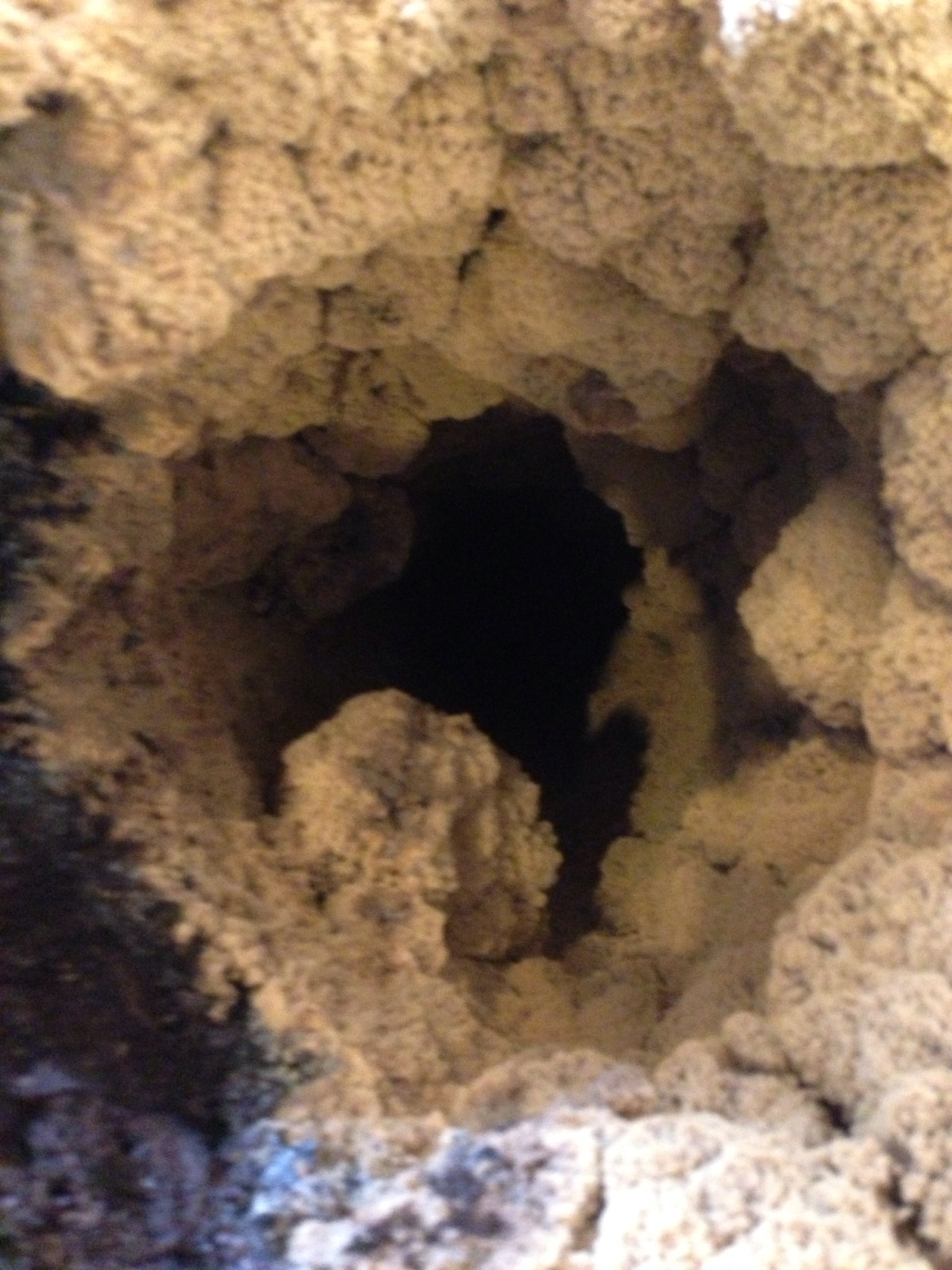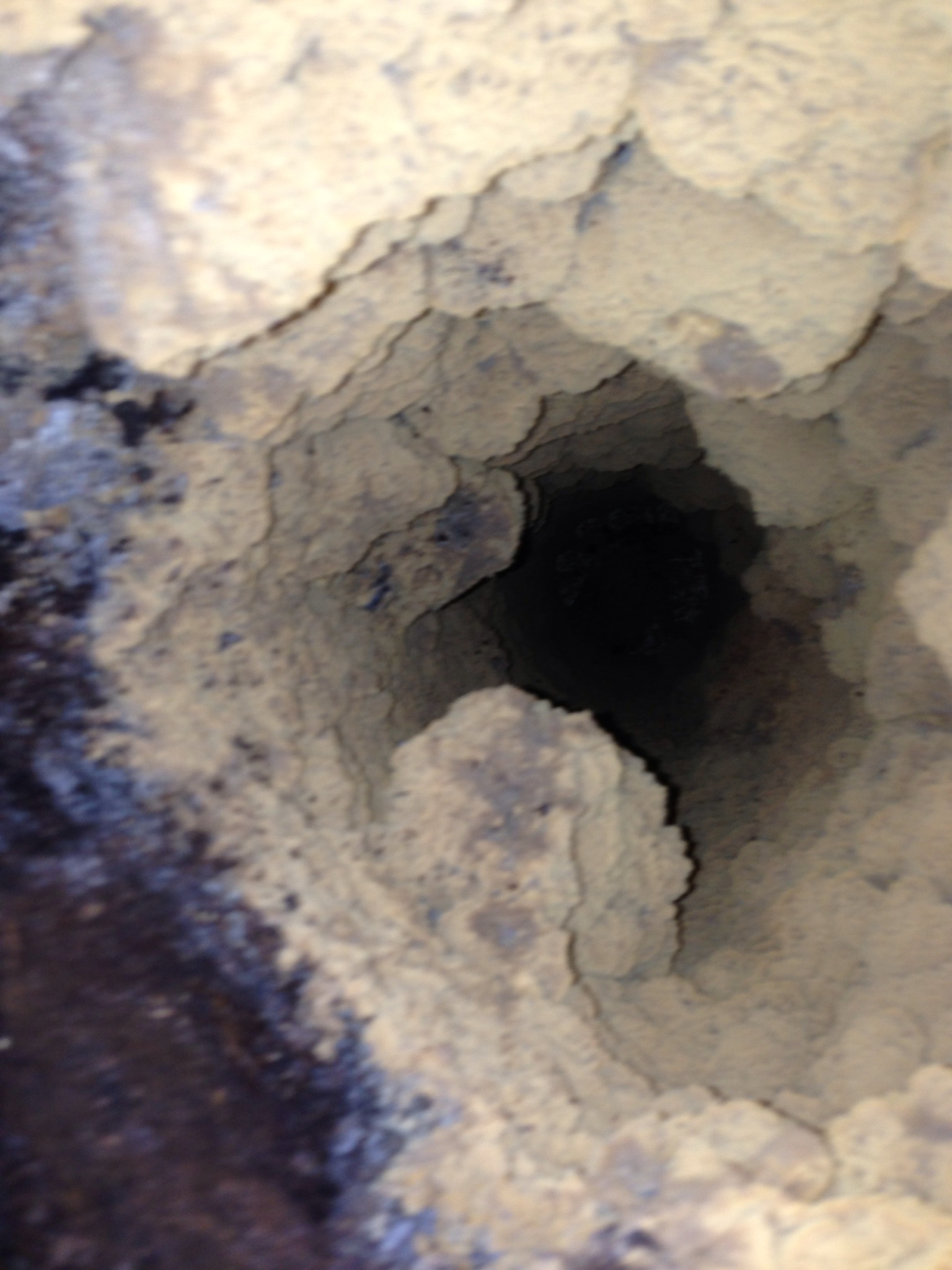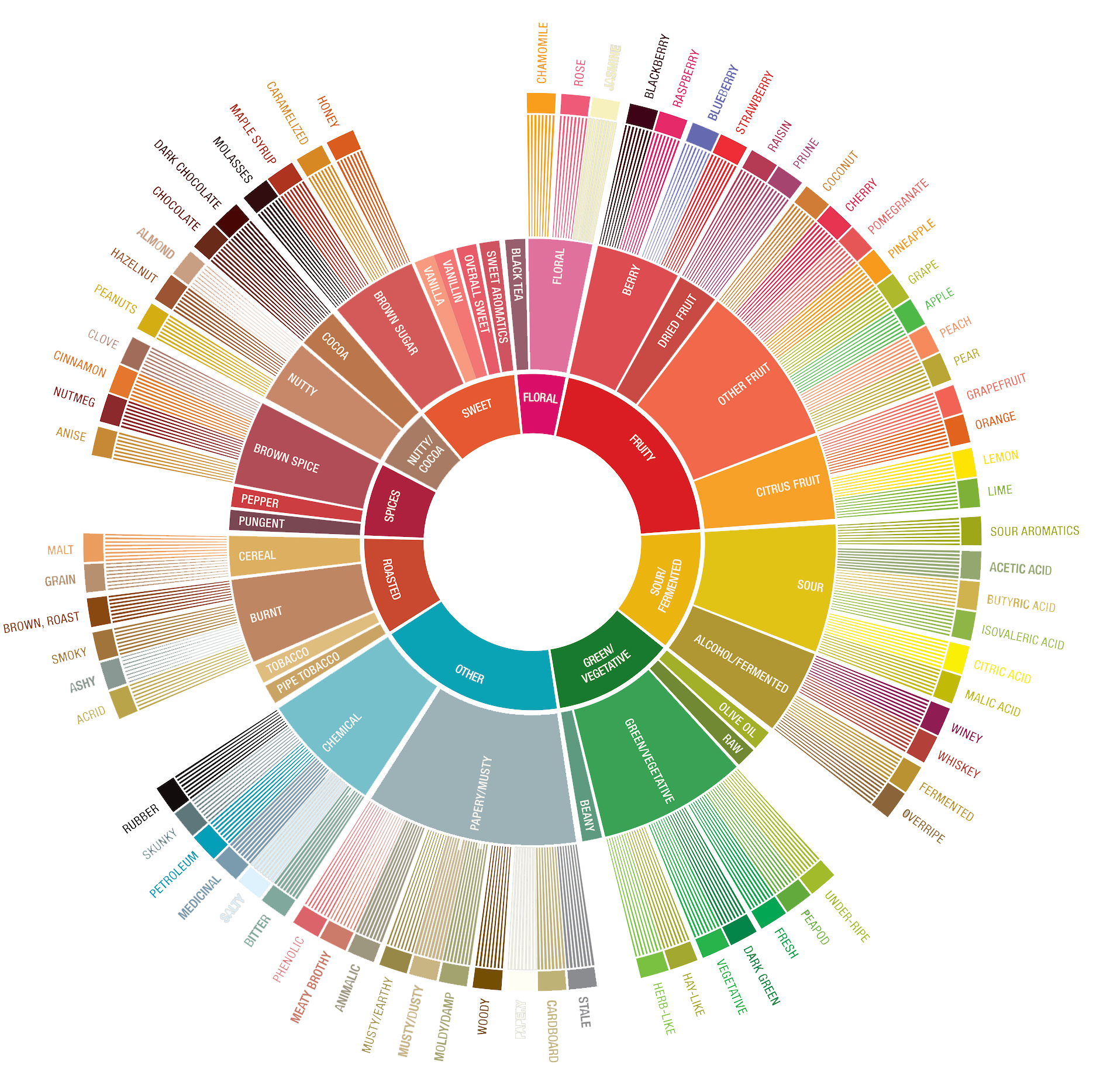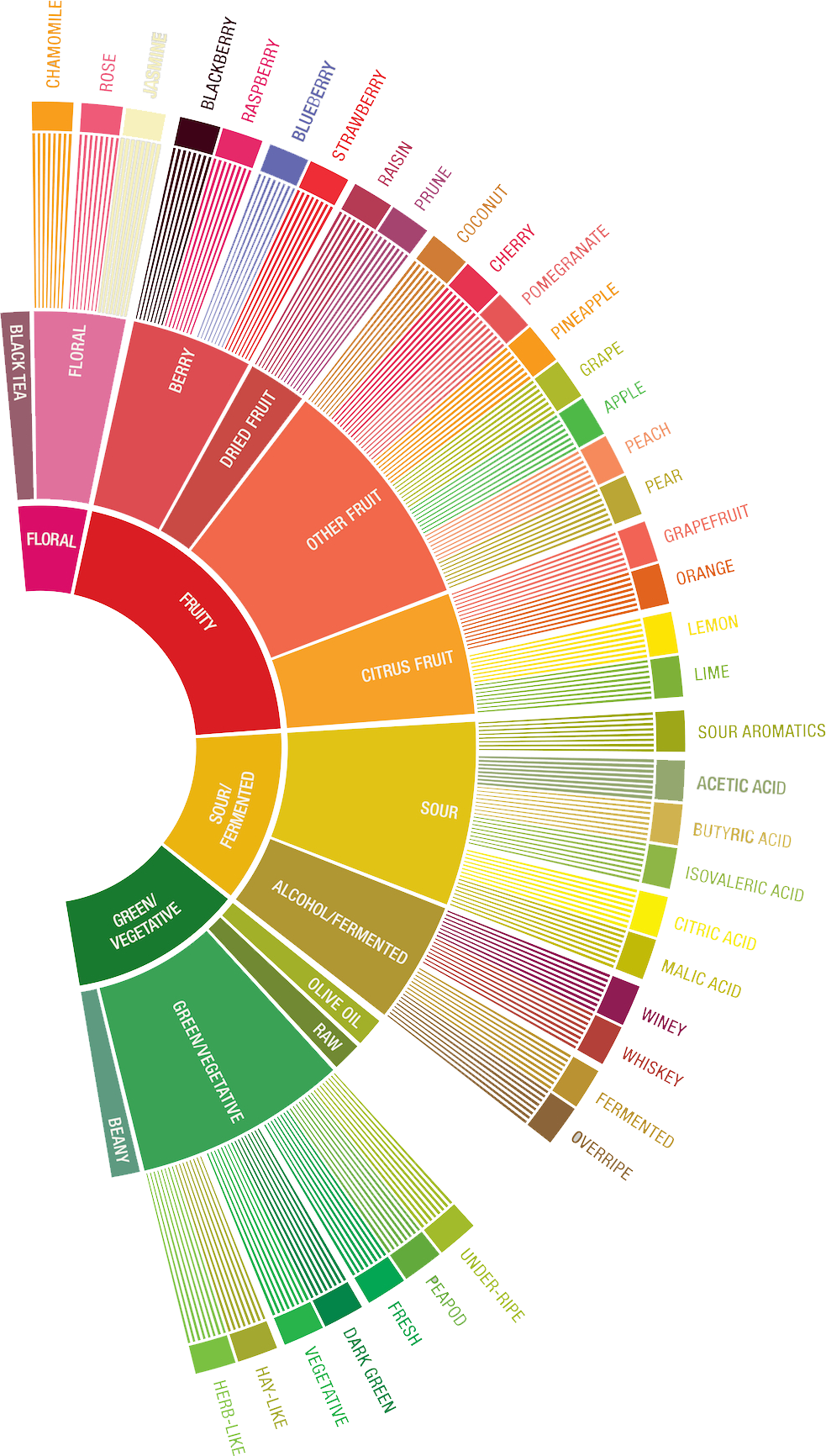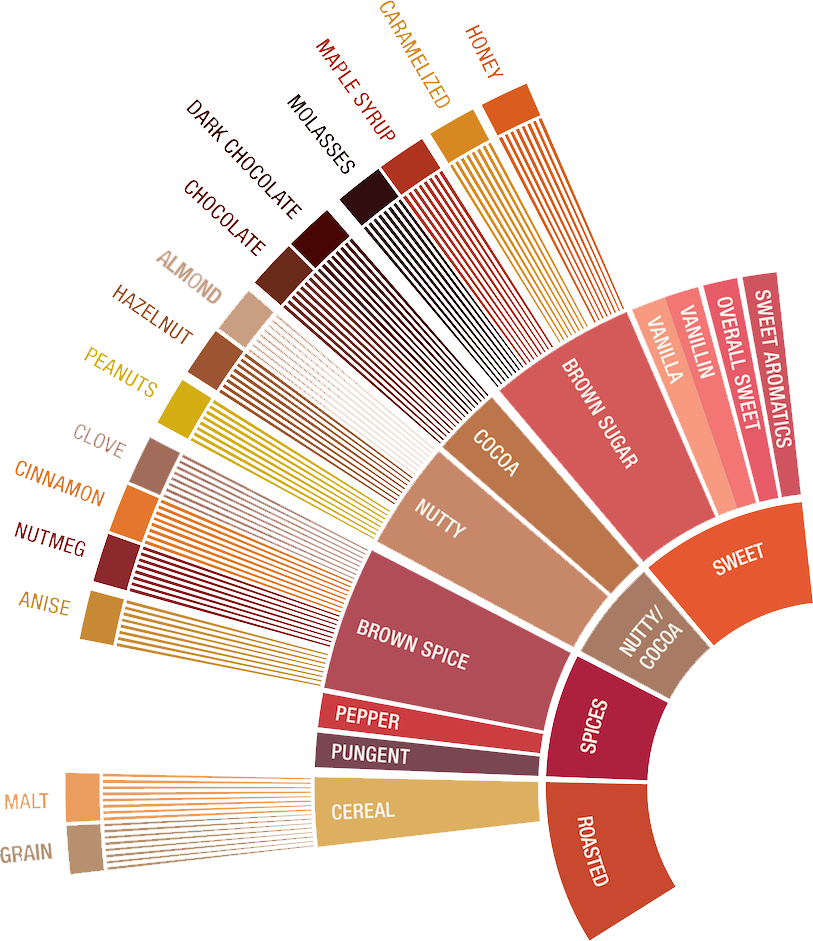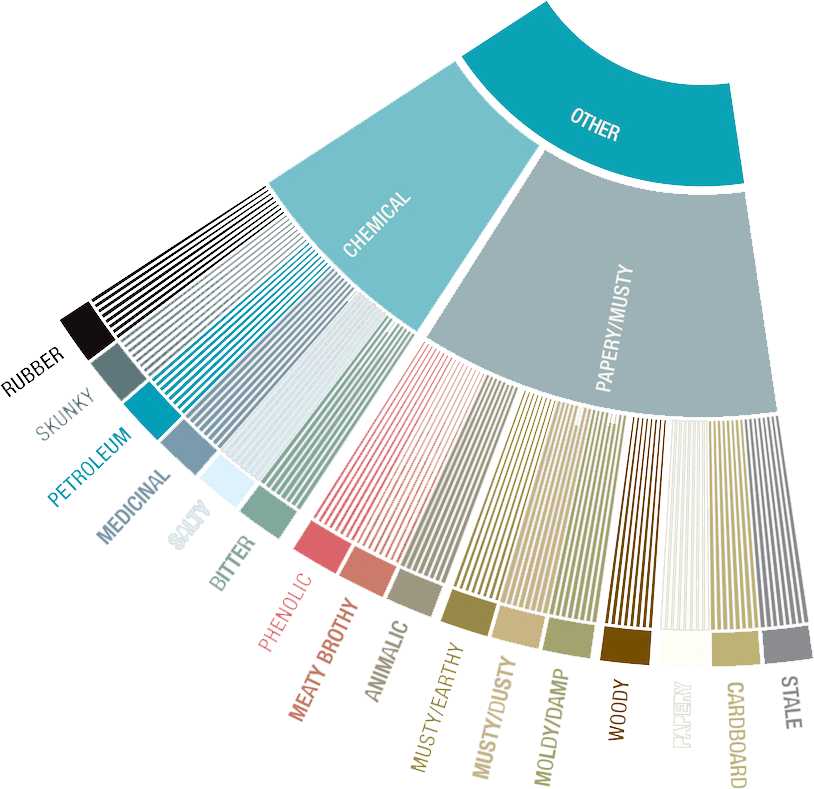Roasting: Intermediate
#CaffeinatedTraining
#OilSlickCoffee
Presented: February 27th, 2019
Host: 5758 Coffee Lab
Location: Bandung, Indonesia
Press "h" for keyboard shortcuts for this presentation
Overall Schedule
- Day 1: lecture/discussion + roasting exercises
- Day 2: lecture/discussion + triangulation exercises
- Day 3: lecture/discussion/review + tests
Day 1 Schedule
- Lecture/discussion
- Review for written test
- Discuss testing procedures
- Discuss tools used during practical activities
- Lunch (60 minutes)
- Safety briefing & introduction to the machines
- Review roasting plan and requirements & go over meters and other tools of the lab
- Roasting Exercises
- Followup, AAR, prep for Day 2
Heat Transfer Methods
Heat Transfer
- Heat = Thermal Energy
- Heat ≠ Temperature
Three types we're concerned with:
- Conduction
- Convection
- Radiation
Heat is thermal energy inside a material.
Heat always travels from hot to cold materials.
Heat can be transferred by different methods and different methods affects the beans differently
Heat is thermal energy, temperature is a measure of heat
Most dominant two forms in roasting: conduction & convection
Conductive
- Physical contact + temperature gradient
- Common cause of roast defects
- Temperature gradient inside bean
- Water content within bean transfers heat to bean center
Conduction is when materials touch each other and the heat diffuses from the hotter to the cooler body.
Once the heat reaches the surface of the bean it is transferred inside bean by diffusing from the hotter surface to the colder center which could lead to colour gradient inside bean
Identify burned spots on coffee as marks of too aggressive contact heat transfer
Water content is critical for conductive transfer. Too little water = too little heat conducted to inside bean. Less water = less steam = less pressure = lower intensity FC.
Optional: talk about possibility of superheated water inside bean helping to cook inside.
Conductive
Convective
- Air as a medium or vehicle
- Most common transfer method in drum and air roasters
- Greater the temp difference between air and bean greater the transfer (potential)
- Easiest for operator to control
- Three ways to control convection:
- Change rate of airflow
- Change energy output of burner/element
- Combination of both
Convection is thermal energy transfer by means of hot air.
It is a special kind of contact heat transfer since heat is transferred when the hot air is in contact with the colder bean.
The magnitude of temperature difference between the air in spaces between beans and the beans themselves is the magnitude of convection heat transfer at any given stage of the roast
Magnitutde difficult to measure directly but the delta ET - BT is one indication
Conductive
Convective
Radiated
- Electromagnetic radiation (same as the sun)
- Some visible, some not
- Example: light from heat source, heat felt near a heat source
- Metal in roaster acts as a battery, storing energy as heat*
Radiation is electromagnetic rays naturally emitted from a heat source and converted into thermal energy in the material it reaches. It is the same radiation as sun light
Radiation is not completely converted into thermal energy at the surface of the bean but there is an absorption gradient in the bean so some heat is added inside the bean without affecting the surface
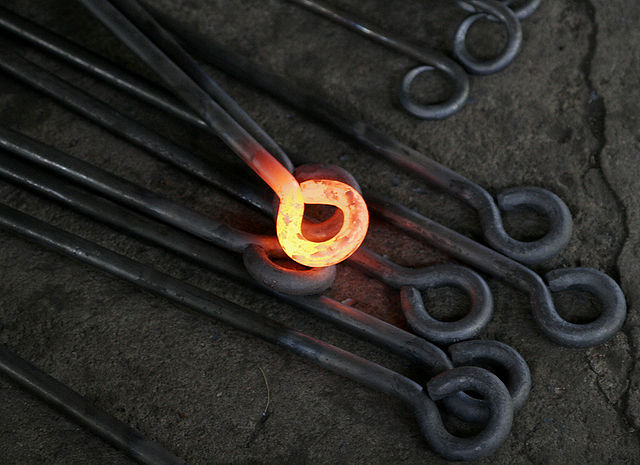
https://upload.wikimedia.org/wikipedia/commons/a/a9/Hot_metalwork.jpg fir0002 | flagstaffotos.com.au [GFDL 1.2 (http://www.gnu.org/licenses/old-licenses/fdl-1.2.html)], from Wikimedia Commons
Heat Transfer, Supplemental
Total Energy
- Coffee roasting is a dynamic process that changes throughout the roast cycle.
- There is infinitely more energy later in the process than earlier.
- None of the forms of heat transfer are independent of one another.
Terry Davis, "The Heat is On, A Roaster's Guide To Heat Transfer," Roast Magazine May/June 2009
Think of the roaster as a generator (of heat energy).
We need energy to do work.
In our case, the work is to turn a raw product (green beans) into a consumable product (roasted coffee).
Coffee roasting is dynamic
Important heat sources by roasting phase
- Drum, Air, Bean
- Air, Drum, Bean
- Bean, Drum, Air
Terry Davis, "The Heat is On, A Roaster's Guide To Heat Transfer," Roast Magazine May/June 2009
None of the heat transfer forms are independent of one-another.
While it’s difficult to control any single form, it is very useful to know which method is dominate at which stage of the roast.
ET drives BT
There is infinitely more heat available at the end of the roast.
Drum, Air, Bean
- Stored energy is critical here
- Energy stored in metal parts
- ...especially the drum
- High potential for roast defects (scorching, tipping, uneven roast, etc)
- How can we control the temp here?
Terry Davis, "The Heat is On, A Roaster's Guide To Heat Transfer," Roast Magazine May/June 2009
Once the roast begins, very little ability to control conduction
However, during preheat, the operator can set the stage
Higher charge temp = more potential energy stored as heat
Longer/more thorough preheat = more potential energy stored as heat
BT/ET/XT all indicate air temp before roast begins. Airtemp is affected by stored heat as well as burner/element.
Remember with partial/smaller batches to reduce the charge temp!
Air, Drum, Bean
- Air is always dominate form
- However, during the second phase we control the Maillard reaction rate largely via air temp
- (Maillard reaction rate increases with more heat)
- Convection is the easiest transfer method for operators to control
Terry Davis, "The Heat is On, A Roaster's Guide To Heat Transfer," Roast Magazine May/June 2009
Bean, Drum, Air
- In the third phase (beginnning with FC) the beans become exothermic
- Can become dominant form of heat transfer
- How can one maintain control here?
Symptoms of too much heat at first crack:
- Higher than normal* RoC
- Uneven roasting (too much momentum)
- Unusual amounts of smoke
- Little to no pause between FC and SC
Terry Davis, "The Heat is On, A Roaster's Guide To Heat Transfer," Roast Magazine May/June 2009
Anticipating exothermic conditions and reducing power early
"[R]oasting starts becoming exothermic at TB around 135ºC and is markedly exothermic when TB = 190ºC" (Schwartzberg 2013)
However; "TB profiles for both industrial and experimental roasting usually do not appear to be noticeably affected by exothermic heating."
Increasing airflow may help reduce momentum here
Boot has in the past recommended increasing heat here. Is that really controlling it or just adding to it?
Also remember that the harder we push the beans towards the end, the harder our cooler must work to cool the beans upon eject. The beans can continue to roast in the cooling tray.
Temperature Midway Point
What is it?
Temperature Midway Point ≈ 75 Agtron
- New concept
- Generates easy color to work/train with
- Not meant to be a standard or a sweet spot regarding end product

Calculate TMP
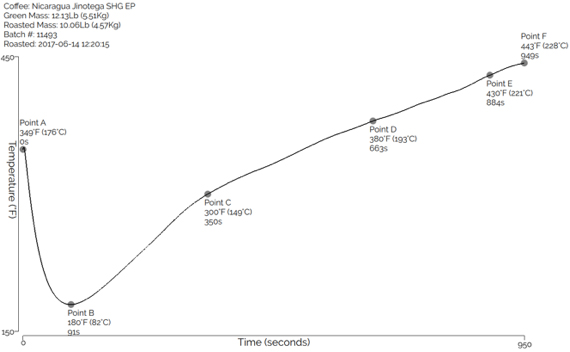
Image: Neal Wilson
Quick Review
- What are the three types of heat transfer?
- Why is water content important?
- What is the difference between heat and temperature?
The Roasting Cycle
The Roasting Cycle
What is it?
- Drying (evaporation)
- Color development (via multiple means)
- FC and beyond
- Cooling Time
- Roast defects?
Evaporation takes heat energy to proceed. Pyrolysis creates heat energy.
Up to 13-22% mass lost during roast; most of the starting moisture.
Even if the same coffee is roasted to the same roast colour you can get very different sensorial results if the shape and timing in the roast profile is different.
Roasting 'Defects' are worst case deviation from 'nice' profile. Cooling time should practically be as short as possible
Discuss aspects of roast defects (scorched, baked, underdeveloped)
Drying (evaporation)
- Primary concern of first-third of roast? Maybe not?
- Evaporative cooling
- Occurs throughout roast cycle at an increasing rate
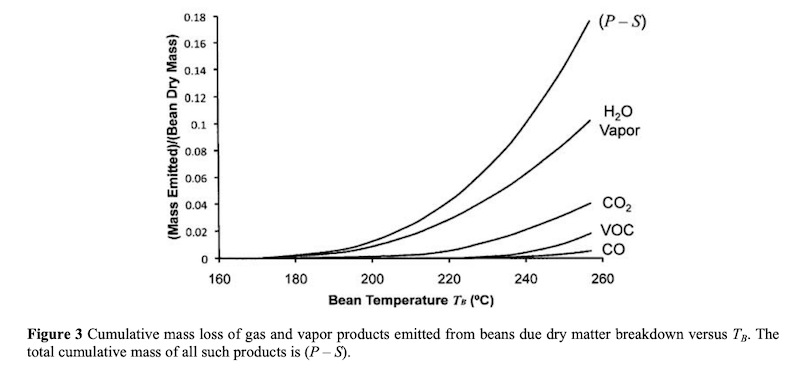
Schwartzberg, Henry. (2013). Batch Coffee Roasting; Roasting Energy Use; Reducing That Use. 10.1007/978-1-4614-7906-2_10.
Moisture leaves the beans during drying and goes from bean to the air between the beans that will become moist and get a higher specific heat capacity.
“materials with large heat capacities, like water, hold heat well - their temperature won't rise much for a given amount of heat - whereas materials with small heat capacities, like copper, don't hold heat well - their temperature will rise significantly when heat is added” http://theory.uwinnipeg.ca/mod_tech/node73.html
Temperatures are held low by evaporating water because evaporation is an endothermic process.
Color development (roasting)
- Maillard reaction (actually a complex set of reactions)
- Melanoidins
- Sugar caramelization
- Streker degradation (another complex)
Much more on this tomorrow
Water is a heat sink—energy used to boil it could be used to roast coffee.
The Mailliard reaction and Strecker degradation are the main contributors to CO2 formation. ↑CO2 = ↑internal bean pressure
First Crack and Beyond
- Typically signals the third phase of a roast profile
- What is first crack?
- An illustrative video: Roasted 3 by Kávékalmár
- Ways to anticipate it?
- Reasons to anticipate it?
Most major size expansion happens post FC.
Beans go exothermic here and can theoretically affect the environment temp.
Can manifest in RoC
Must be vigilant here—things happen fast in a short period of time
Maillard RX and sugar caramelization are happening readily and rapidly at these temps (180°C+)
Cooling
- Beans are still roasting when we eject them
- remember Bean, Drum, Air
- More aggressive cooling = better control over stopping point of roast
- Ways to improve cooling time?
- Ideally want to cool to room temp in ≤ 4 minutes
- Why?
By the third phase, the beans become a source of heat, even when ejected into the cooling tray.
Can often "drift" into second crack in the cooling tray (this could be intentionally done).
Rate of Change
- Often called Rate of Rise (but temp may not always rise)
- Speed (momentum) of the roast
- Typically measured in 30 or 60-second intervals
- Not useful until after TP
- 30s is more accurate than 60s calculations
- Just another tool (but a handy one)
- As profiling software improves, so does RoC's usefulness
Changes to RoC are more quickly obvious than changes to BT
With Artisan, prior to version 1.0, RoC was a tool for post-roast analysis. Current versions make it more tactically useful.
Calculating Rate of Change
Example:
At 4:00 temp is 148°C
At 4:30 temp is 153°C
The temperature increased 5° in thirty seconds
153° - 148° = 5°
Therefore, RoC is 5°/30s
Or if we want a more accurate/higher resolution RoC we could calculate the rate of change per second:
153° - 148° = 5°
Time = 30s
5/30 = .16°/s (not very useful, in my opinion)
RoC Visualized
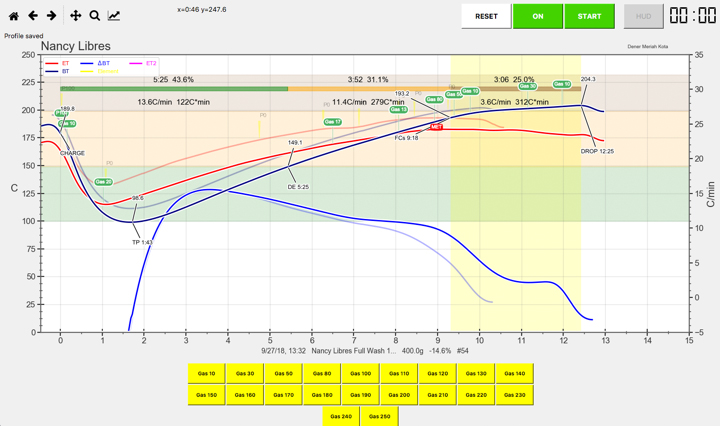
Quick Review
- How much mass is typically lost during the roast and what is most of the ‘material’ that is lost?
- Which occurs first (and thus longest); Strecker degradation or the Maillard reactions?
- Why are darker roasts less acidic?
Basic properties and physical changes
Observable changes
- Coffee is organic!
- Endothermic VS exothermic reactions
Important changes to observe and measure:
- Temperature over time
- Volume
- Weight
- Color
- Density
In the next activity, we're working to recognize the visually observable changes that take place during the roast cycle.
This is another tool. Old school roasters roasted by sight and smell. Some contend this is the best way. It is certainly a great way to learn the process and your machine but sight and smell are nuanced, subjective, and easily affected by many things (indv. anatomy, genetics, colds, mood, weather, culture, etc).
Really geek out: Cultural transmission results in convergence towards colour term universals
Think of the difficulty of accurately defining the exact onset of first crack. Is it the first pop, two pops, many pops?
Hard data is king (but not perfect). Combine sensory observation with telemetry for best results.
Activity: Visual ID Roast Stages
- Take note of what each stage looks like
- Compare stages and visually understand the progression
- Things to note:
- Color
- Bean surface (Is it smooth? Is it wrinkled?)
- Move the trays around and compare different stages side-by-side
- Size comparison (At what stage does size begin to dramatically change?)
This activity is about navigation. How the beans look and smell in the tryer is where we are. What they'll look and smell like at our target roast point is where we're going.
Temperature over time
- Temperature evolution
- Typically includes bean and air or environment temp (BT & ET)
- Momentum (Rate of change or rate of rise)
A roast profile is a graph showing temperature evolution over time typically for Bean and Air temperature.
Volume Changes
- Cell walls become brittle
- Water vapor inside bean creates a vapor “wall”*
- CO2 build-up
- Other organic gasses
Volume increases due to material gets soft when heated combined with water evaporating into steam and pyrolysis creates organic gasses + CO2.
A pressure is build-up by the evaporating water that will later be the primary driver of bean swelling. If this part is too slow (too low flame) the gas would leak before creating a pressure high enough to expand the bean and the coffee will be 'underdeveloped'.
If this part is too quick (too high flame) the surface of the bean will be scorched.
Beans can swell to 30 - 100% in size
Weight Changes
- Weight difference is a critical measurement
- Weigh coffee before and after roasting and calculate % weight loss
- Density change is also a good measurement to track consistency
Water in form of vapour and organic material is lost when converted into gas that leaves the material
Color changes
- Sugar browning
- Melanoidins
- Industry standards for color measurement
The product of Maillard reaction (melanoidins) is brown and happens quickly after drying is finished slightly above 100° Celsius.
Know different industry standards for measuring colour.
Discuss color meters and how they work (emitting light and evaluating/measuring the wavelength of reflected light)
Some measure wavelength as well as reflection intensity
Browning starts at 140°C
Sugar Changes
- Simple sugars already present in green bean
- Broken down and used later to form polysaccharides
- Caramelization
- Maillard VS Caramelization
Caramelization happens at high temperature (closer to 140-160° Celsius) so the Maillard reaction is much more pronounced due to it's lower activation temperature
Acidity Changes
- Acids formed early in roast
- Get reduced later in roast
- Therefore acidity provides information on roast level
More on acids tomorrow!
Acids are formed very early in the process but starts to get reduced when entering into commercially relevant roast degrees
Workspace Management
Workspace Management
Green coffee storage, ideal conditions:
- 60% relative humidity
- Green beans at 10-12% moisture content (12% = longest shelf life with 60% relative humidity)
- Keep bags ~15cm off floor, away from pests, water, etc
- Routinely check and monitor condition of stored greens
- Oxygen and water are key staling agents—control them.
Workspace Management
Ideal safety conditions
- Production flow
- Efficiency, organization in layout & movement
- Physical safety/health (heavy lifting)
- Air quality while roasting
- Big roasting machine (20+Kg) consider a mask
- When handling greens consider a mask
- Not just gases, but micro-fibers & micro-particles from greens
- Fire safety
- Fire suppression
- Plan for a roaster fire
- Share the plan with everyone
- Revisit the plan regularly (at least yearly)
Roaster Machine Construction
Roaster Machine Construction
- Drum roaster
- Fluid bed
- Batch VS continuous roaster
Different roasters have different safety concerns.
Ventilation
- Within the drum, ventilation creates convection heat transfer
- Within the roastery, ventilation keeps humans alive ;)
- Keep the exhaust stack clean to avoid fires!
- Ensure dangerous gases are evacuated from facility
Photos by Marty G. Curtis, used with permission. https://www.facebook.com/roastmeister/posts/10219395067575708
Creosote as arterial plaque
In the roast chamber: the airflow mix the hot air into the batch of beans and creates convection heat transfer
In the chimney: Avoid resistance (length + bends). Organic buildup adds resistance and fire risk
Electricity
- Electric roasters are fine for sample roasting or lab roasting.
- Electrical heating elements are slow and don’t scale well
Question: how would you compensate for the lag caused by an electrical heating element?
Tools for roasting
- Buckets + shovel/scoop
- Logging sheets or software
- Timer and temperature probes
- Infrared thermometer can be helpful
- Moisture, density, and roast color meters are handy (and getting cheaper and smaller)
- Quality Control System (what does this look like?) *A roaster (obviously)
You need to organize your work place so that you can store green and roasted coffee in containers with full batch traceability.
Ergonomic tools for handling coffee.
You need a quality control system either manual pen-and- paper or logging software.
You need basic lab equipment to monitor quality of green and roasted coffee.roaster.
Cleaning, Maintenance, & Troubleshooting
- Ventilation ducts
- Chaff collector
- Exhaust air cleaning
- Cooling tray
- Area surrounding roaster
The Flavor Wheel
Umbrella Terms General Terms Specific Terms
Whitespace indicates relationship
World Coffee Research Lexicon
The terms used in the new flavor wheel come from the WCR lexicon.
Descriptive
- No “good” or “bad” attributes (unbiased)
- Not for ranking coffee
- Purely descriptive
Quantifiable
- Uses an intensity scale of 1 - 15
- Allows for easy comparison of two or more coffees
Replicable
- When used properly, tasters from all over the world will experience and describe the same coffee the same way
What's Next?
Tomorrow
We’ll meet in the cupping lab
We’re cupping immediately after a quick meeting
- No perfumes, colognes or heavy fragrances
- Be done smoking in time for your clothes to air-out
Today's Roasting Activity
Roast 1: Perform roast with any profile to Temperature Midway Point (sample color creation).
Roast 2: Perform roast with similar profile to Midway Point of Roast 1 but continue to the start of 2nd Crack (and thereby resulting in a longer development time).
Roast 3: Roast coffee to the same profile to First Crack, then end at the same color with a longer development time (over 4 mins).
Roast 4: Roast coffee to the same profile to First Crack, then end at the same color with a shorter development time (under 1:30).
Roast 5: Roast coffee to the same profile to First Crack, then end at the same color with a 2-3 minute development time.
Roast 6: Repeat roast #1 and achieve the same color (within 4 agtron points) with the same profile (within 5 seconds per phase)
It's all about consistency
These activities are designed to illustrate a few things.
- Control is king
- Roasts with different profiles but the same color can be very different in the cup
- Your ability to consistently repeat a roast profile demonstrates control
Tips for success:
- In the first roasts, pay attention to the response time of the machine
- Knowing how responsive it is allows you to better correct a straying profile
- Remember the visual ID activity to know where you are and where you are going
- Have fun!
Value 4 Value
If you found this content useful, please consider supporting my work. I charge no set fee or price for providing this. You can help keep information like this openly accessible by matching the value you received in the content; value 4 value.
Ko-fi / Bitcoin Wallet: 32SW9kcAsJdZvQKBazhLUZBSD9YS8DDqe8
End of presentation
